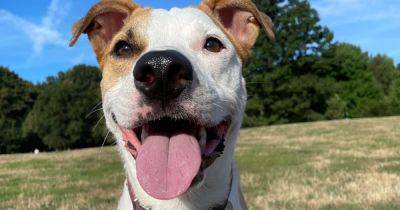The Sneaky Signs Your Dog Is In Pain
If you have a dog, then you know how unbelievably tricky it can be to tell if or when it’s in pain.
A fractured tooth will cause it to turn its nose up at kibble, for example, or a bellyache will drive it to lick the floor incessantly. It’s difficult to discern what, exactly, the dog is trying to tell you; the only thing that’s obvious, to the human eye at least, is that its behavior is off.
In general, when a dog is sick or injured, it’ll show signs of ADR, or “ain’t doing right” — a catchall phrase that veterinarians use for the odd behavior that dogs exhibit when they’re in pain.
“While many pet parents will detect something isn’t quite right with their fur baby, a lot of people won’t necessarily make the connection that their pet is acting unusually because they’re struggling with pain,” Dr. Rebecca Greenstein , a veterinary medical adviser for Rover and the chief veterinarian at Kleinburg Veterinary Hospital, told HuffPost.
Below, vets share seven of the most common clues that a dog is in pain.
1. It can’t stop licking.
If your dog is licking itself constantly or gnawing on a body part, it may have pain on or under the skin, according to Dr. Liz Stelow , a board-certified veterinary behaviorist with the UC Davis School of Veterinary Medicine. This obsessive behavior could also be a sign of anxiety, itchiness, a compulsive issue, or gastrointestinal pain or discomfort .
The main issue with excessive licking is that although it may temporarily calm pain receptors, the licking itself may injure the skin and exacerbate the pain. Stelow likened it to when people scratch a wound.
“Often the licking is intense in nature and directed at one particular area, presumably the source of the discomfort,” Stelow said.







